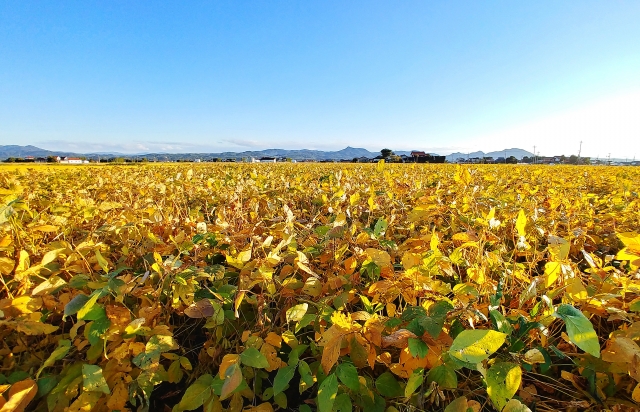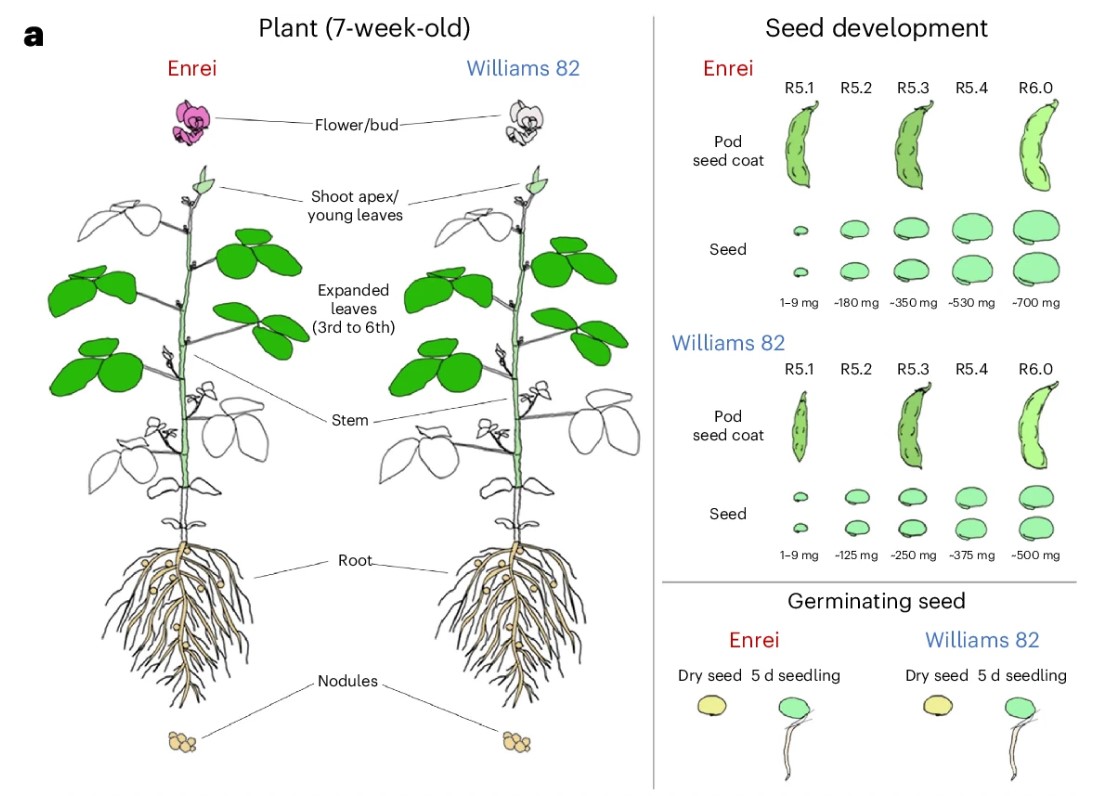Soybeans are an essential crop worldwide, serving as food, animal feed, and a source of oil. However, much remains unknown about their genetic diversity. A recent study published in Nature Genetics aimed to shed light on the genetic diversity of Japanese and global soybean cultivars by constructing 11 high-quality genome references and analyzing structural variations (SVs) at the gene level. This research explored how specific genetic variations influence productivity and traits, providing new insights into soybean breeding. In this article, we will delve into the study’s findings and discuss how they may contribute to future soybean breeding strategies.

Research Objectives and Methods
The goal of this study was to uncover the unique genetic characteristics of Japanese soybean cultivars and understand how these genetic differences affect traits and productivity. The research team utilized Oxford Nanopore Technology (ONT) for long-read DNA sequencing to construct high-quality genome references for seven Japanese soybean cultivars, three North American cultivars, and one primitive cultivar, totaling 11 genomes. Additionally, they developed a new analytical method, “Asm2sv,” to comprehensively identify gene-level structural variations (gene-SVs). Using this dataset, the researchers conducted a pangenome analysis of 462 soybean cultivars worldwide, identifying selective sweeps between Japanese and U.S. soybean cultivars. Furthermore, genome-wide association studies (GWAS) were used to pinpoint genes associated with economically significant traits, such as large seed size and pod dehiscence resistance.
Key Findings from the Study
The study revealed significant genetic differences between Japanese and U.S. soybean cultivars. One of the most notable discoveries was related to the PDH1 gene, which controls pod dehiscence resistance. In Japanese cultivars, the wild-type PDH1 gene was retained, whereas in U.S. cultivars, a loss-of-function variant (K31 mutation)* had been selectively favored. This mutation helps prevent seed dispersal during harvest, an essential trait for mechanized agriculture in the U.S. Additionally, an insertion mutation in the 3′ UTR region of the GmFT2b gene was identified in some Japanese soybean cultivars, suggesting a potential role in flowering time regulation. The study also identified genomic regions associated with large seed size, showing that specific allele combinations contribute to this trait in Japanese cultivars.
Key Traits for Enhancing Productivity
This research identified several traits that could directly contribute to improved soybean productivity and quality:
- PDH1 gene (Pod dehiscence resistance): Introducing a loss-of-function mutation can prevent pod shattering, reducing seed loss during harvest.
- GmFT2b gene (Flowering time regulation): Genetic control of this gene allows optimization of flowering time, improving adaptability to different regions.
- Glyma.16G152700 (GATA transcription factor): Variations in this gene may enhance the expression of the large-seed phenotype.
- CG-α-2 (Seed storage protein): This gene is involved in protein content regulation, allowing for soybean varieties tailored to specific food applications.
These findings highlight the potential of genome editing technologies to facilitate more efficient breeding strategies.
Conclusion and Future Prospects
This study provided crucial insights into the genetic uniqueness of Japanese soybeans and how these genetic differences influence key agronomic traits. The identification of genes associated with pod dehiscence resistance, large seed size, and flowering time regulation opens new possibilities for soybean breeding. By leveraging genome editing technologies, breeders could develop improved soybean cultivars more rapidly, contributing to sustainable agriculture and the development of high-value food products. Moving forward, applying these findings to breeding programs and the establishment of new breeding technologies is expected to accelerate soybean improvement.




コメント